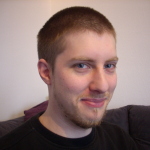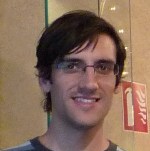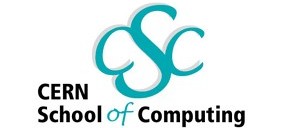|
The jury of
the CSC examination is pleased to give a special distinction
to the four students below who obtained a mark of 30.
|
4th Mark |
|
Pavel JEZ |
Niels Bohr Institute, Copenhagen - Denmark |
|
 |
I am a Ph.D student at Niels Bohr Institute in Copenhagen.
At the moment I am involved in the commissioning and optimizing of the Tau
trigger at the ATLAS experiment at CERN. My work is focused on the
performance of the Tau trigger in the environment with multiple collisions
per bunch crossing, so-called pile-up collisions. The study is done on the
Monte Carlo samples produced with the Athena software framework.
For my analysis I am using ROOT
and its toolkit for multi-variate analysis in particular. The goal of my
study is to find an ideal set of observables which can be used to select
events with hadronically decaying tau leptons with the top performance in
terms of signal efficiency and background rejection.
|
|
|
|
|
Tim MUENCHEN |
Bergische Universit?t Wuppertal - Germany |
|
 |
I studied computer science at the University of Applied Sciences, M?nster,
and got my master's degree in 2007. In 2008, I started to work on my PhD
thesis at the ATLAS working group of the University of Wuppertal. I am
continuing development on the user space job monitoring software, JEM,
created at Wuppertal, and focus on the user interface (integration in the
job submission and management tool 'ganga') and a binary tracing module
allowing to monitor.(athena-) user algorithms written in C++.
|
|
|
|
|
Andrea PARENTI |
DESY, Hamburg - Germany |
|
 |
I am working at the Deutsches Elektronen-Synchrotron (DESY) in Hamburg,
Germany, for the ZEUS and CMS experiments. I am the Monte Carlo Coordinator
for the ZEUS experiment: my tasks are to guarantee a smooth processing of
Monte Carlo events, coordinate people working on the simulation software,
build-up new versions of the Monte Carlo software.
I also made analysis of the ZEUS data using Fortran and PAW. In CMS
I am involved in the alignment of the silicon tracker. I am responsible for
a package of perl scripts helping in managing a large amount of alignment
jobs. I am also doing alignment studies with Monte Carlo events; the
software we use for this is C++/root based.
|
|
|
|
|
David SINUELA PASTOR
|
CERN, Geneva - Switzerland
|
|

|
My current work consists in the development of raytracing functionality
inside the FLUKA simulator (http://www.fluka.org). Currently the only way to
visualize the geometry given to the simulation is by 2d plane cuts drawn by
gnuplot, the aim is to have a 3 dimensional representation of the geometry.
The implementation is currently working, made in C language but thinking in
a posterior conversion to FORTRAN 77. Given the limitations of FORTRAN 77,
the main algorithm has been converted to be iterative instead of recursive,
using a binary tree implemented in a fixed size array (there is not dynamic
memory allocation in F77). Now I'm converting the code to FORTRAN and it
will hopefully merged with the main FLUKA code by the end of this year. - I
feel more comfortable working with linux systems. Languages: C, C++, Java,
Ruby, Python, Fortran, Shell scripting, Javascript, etc. - I'll use my work
at CERN as my thesis, and this year I'll obtain the MSc degree.
|
|
|

